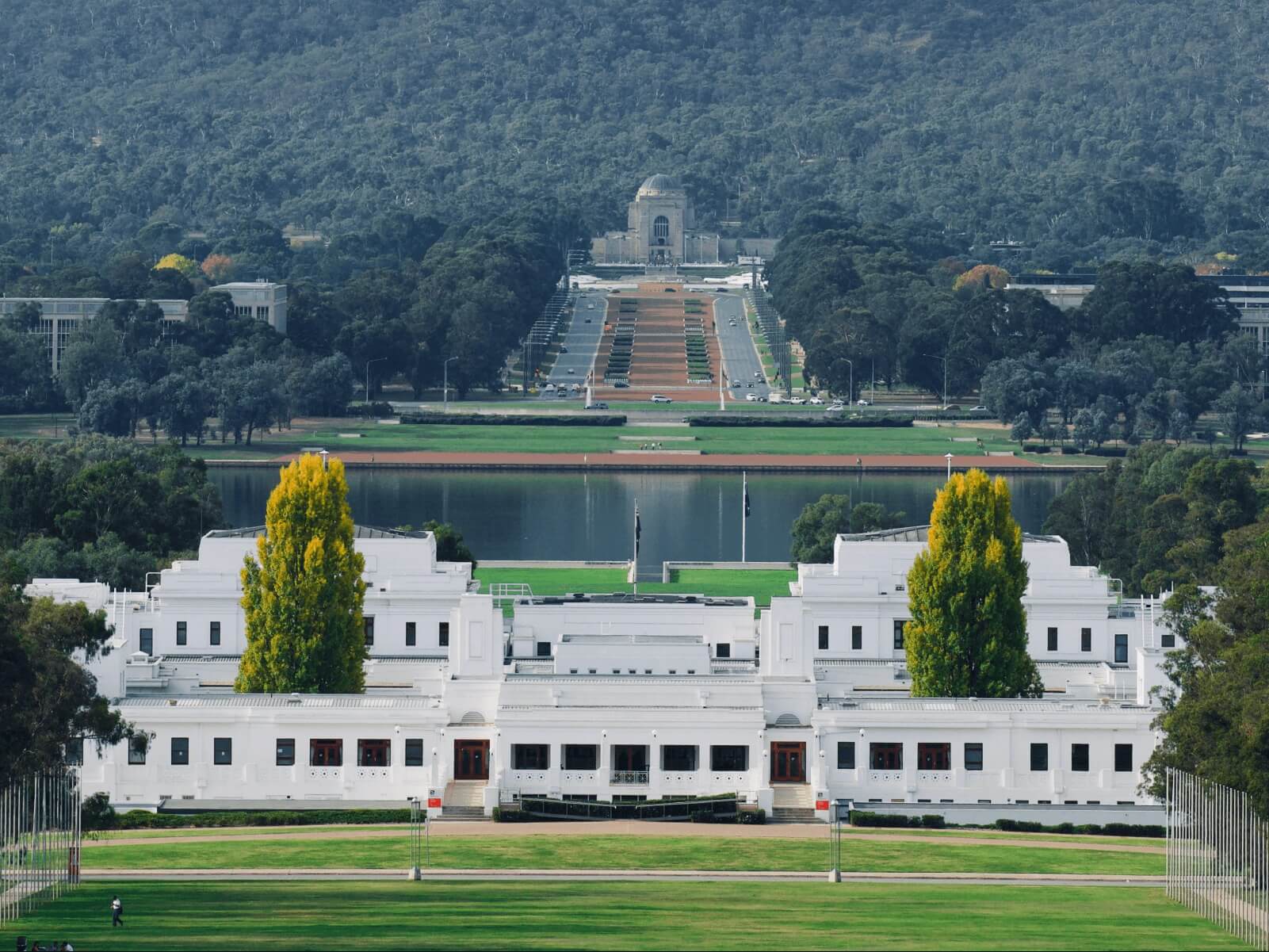There’s no arguing that Australia is beautiful all year round. But did you know that the best time to visit Canberra is when you can catch the majestic trees, plants, and flowers at their prime? In Canberra, the colourful and breathtaking Floriade Festival, held in the springtime is an annual celebration of all things horticultural. Autumn is also a spectacular time to visit Canberra and see the amazing trees and gardens in full bloom.
A Short History of Canberra’s Plan: Shaping a Capital for Generations to Come

Canberra, the capital city of Australia, is known for its stunning landscapes, iconic landmarks, and unique urban design that integrates nature seamlessly. From the beginning, the planners of Canberra envisioned a city that would be enriched by the presence of trees and gardens. Today, these green spaces have flourished, transforming the city into a haven for nature lovers and creating a sense of tranquility amidst the urban environment.
The story of Canberra’s plan is rooted in vision, foresight, and the desire to create a capital city that would reflect the ideals and aspirations of a nation. In 1911, the Australian government launched an international competition to design the layout of the new capital. It was a monumental task, as this city would become the symbol of Australian democracy and national identity.
The winning entry came from a husband-and-wife team of architects, Walter Burley Griffin and Marion Mahony Griffin. Their design stood out for its innovative approach and the integration of nature within the urban landscape. The plan featured an axial alignment that linked important landmarks, creating a sense of harmony and balance.
The centrepiece of the plan was the iconic axis that stretches from Mount Ainslie to Capital Hill, with the majestic Parliament House at its apex. This axis became the backbone of Canberra’s design, connecting key points and creating a visual and symbolic alignment that still defines the city’s layout today.
One of the remarkable aspects of the Griffins’ plan was their emphasis on the preservation of nature. They envisioned a city where green spaces, trees, and gardens would be an integral part of the urban fabric. This vision was realised through the creation of expansive parklands, picturesque lakes, and the careful integration of tree-lined streets throughout the city.
The Benefits Of The Trees and Gardens In Canberra

As the city developed, the plan’s principles were followed, ensuring that Canberra would be a city where residents and visitors could enjoy the beauty of nature alongside the urban environment. The result is a city that boasts an abundance of parks, reserves, and gardens, providing a sense of tranquility and serenity amid a bustling capital.
Today, Canberra’s tree-lined streets, manicured gardens, and well-preserved parklands stand as a testament to the enduring legacy of the Griffins’ vision. The city’s urban design continues to embrace the principles laid out in its plan, ensuring that future generations can enjoy the beauty and harmony of the capital for years to come.
The integration of nature in Canberra’s plan not only contributes to the city’s aesthetic appeal, but also offers numerous benefits to its residents and visitors. Trees and green spaces enhance air quality, provide shade and cooling, and support biodiversity. It creates opportunities for outdoor activities, relaxation, and connection with the natural world.
The Best Time To Visit Canberra To See Trees And Gardens Bloom

One of the best times to appreciate the beauty of Canberra’s trees and gardens is during the springtime – specifically for the Floriade Festival, held annually in September and October. This internationally renowned event showcases thousands of flower displays, including a stunning array of tulips. The festival is in Commonwealth Park, where visitors can wander through themed garden beds, admire intricate floral arrangements, and enjoy live music and entertainment. The Floriade is a celebration of nature’s beauty and a testament to the city’s commitment to showcasing vibrant colours and sceneries of springtime.
The Canberra Floriade Tour is not just limited to the festival grounds – it also takes you to other hidden gems such as the National Arboretum and The National Bonsai and Penjing Collection. Furthermore, you’ll visit Tulip Top Gardens, a private estate that showcases a magnificent display of colourful tulips. With expert guides providing fascinating insights into the festival’s history and horticultural wonders, this tour offers a truly immersive and unforgettable experience for flower enthusiasts, nature lovers, and anyone seeking the beauty of spring in full bloom.
However, the appreciation of trees in Canberra extends beyond the Floriade Festival. Another remarkable season to visit is during autumn, when the city’s trees showcase magnificent colours. Each tree on every street paints a spectacular picture, turning Canberra into a breathtaking canvas of vibrant hues. The autumn foliage is a sight to behold and draws visitors from near and far to witness the mesmerising transformation.
Canberra Guided Tours understands the allure of Canberra’s trees and gardens and offers tailored experiences for those who wish to immerse themselves in this natural beauty. From the Floriade Festival to the National Arboretum and the hidden treasures of Tulip Top Gardens, there’s so much to discover. Let Canberra Guided Tours be your gateway to the natural wonders of the capital city. Don’t miss out on this incredible opportunity to explore the beauty that blooms in Canberra’s gardens.
Book one of our tours today and experience the enchanting trees and gardens of Canberra. We offer nature and wildlife tours, a seasonal Canberra Floriade Tour, as well as other tours and services for every age, interest, and taste.





